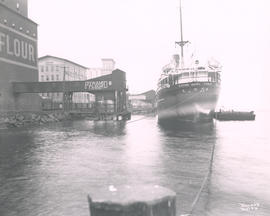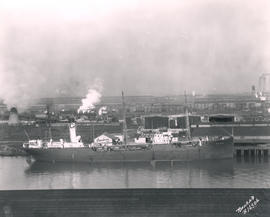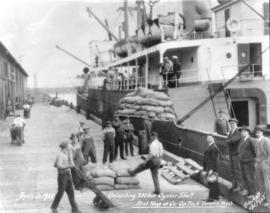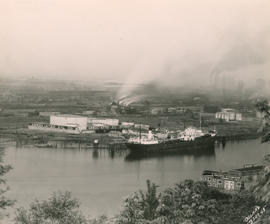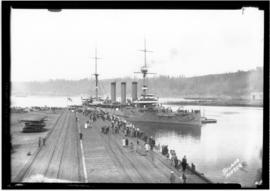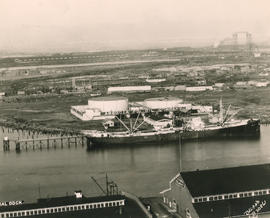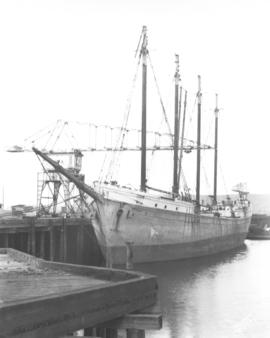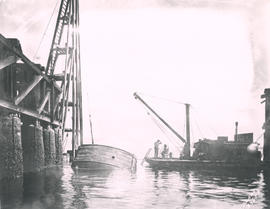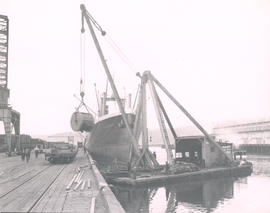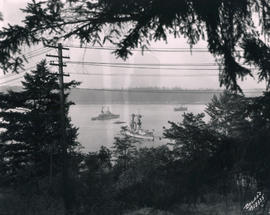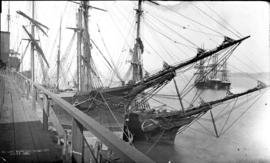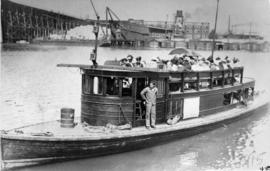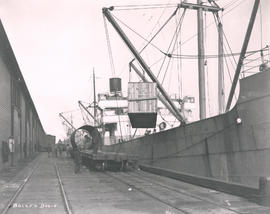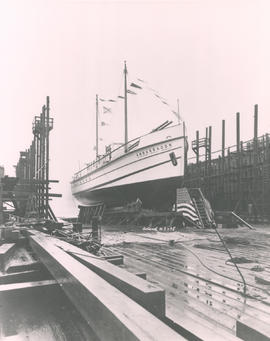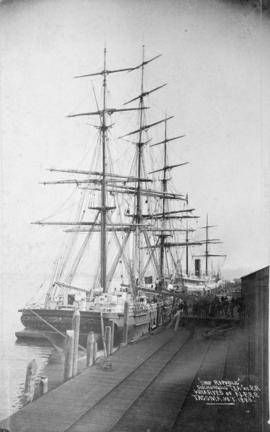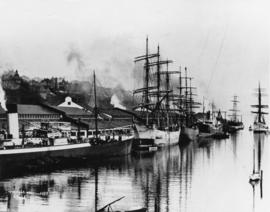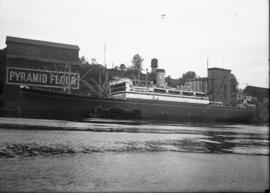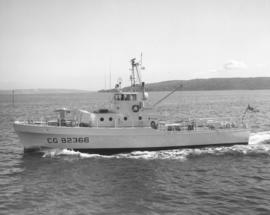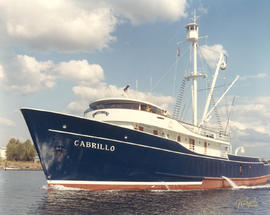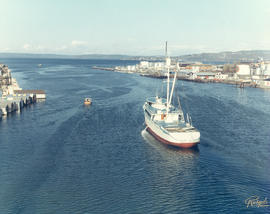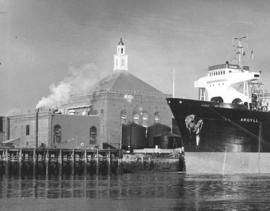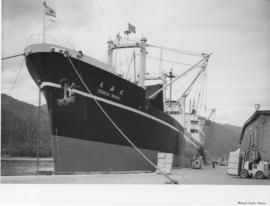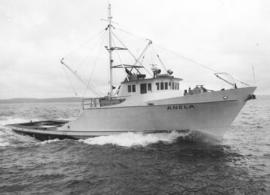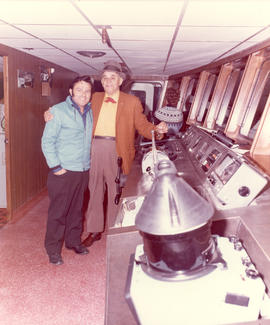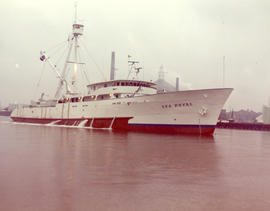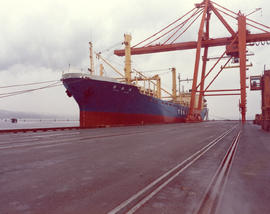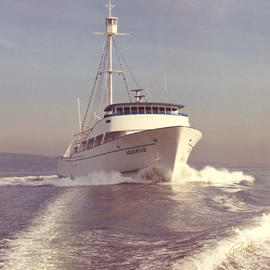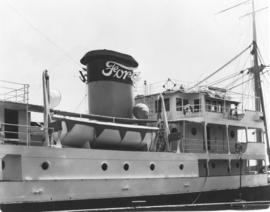The "Point Judith" was built by J.M. Martinac Shipbuilding in Tacoma, launched on March 16, 1966, and commissioned that July. She is pictured above undergoing sea trials in mid-July of 1966. "Point Judith" was the first of 26 new Point Class 82-foot Coast Guard cutters built to replace similar cutters sent to Vietnam. This patrol boat was designed to have light steel hulls and aluminum superstructures. The "Point Judith" would spend her life stationed in California, at San Pedro and Santa Barbara. She was used for law enforcement and search-and-rescue operations until being decommissioned in January, 1992, and transferred to Venezuela. "Point Judith" was the first cutter built outside the Coast Guard's own shipyards in Curtis Bay, MD. Costs for the 26 cutters averaged approximately $400,000 apiece. Ordered by J.M. Martinac Shipbuilding. (TNT 10-30-66, A-17); (www.uscg.mil/hq/g-cp/history/WEBCUTTERS/Point_Judith.html; Newell, Gordon: Maritime Events of 1966, McCurdy: Marine History of the Pacific N.W.1966-1976);
Ship trials--Tacoma--1960-1970; Boat & ship industry--Tacoma--1960-1970; J.M. Martinac Shipbuilding Corp. (Tacoma); Government vessels--Tacoma;
